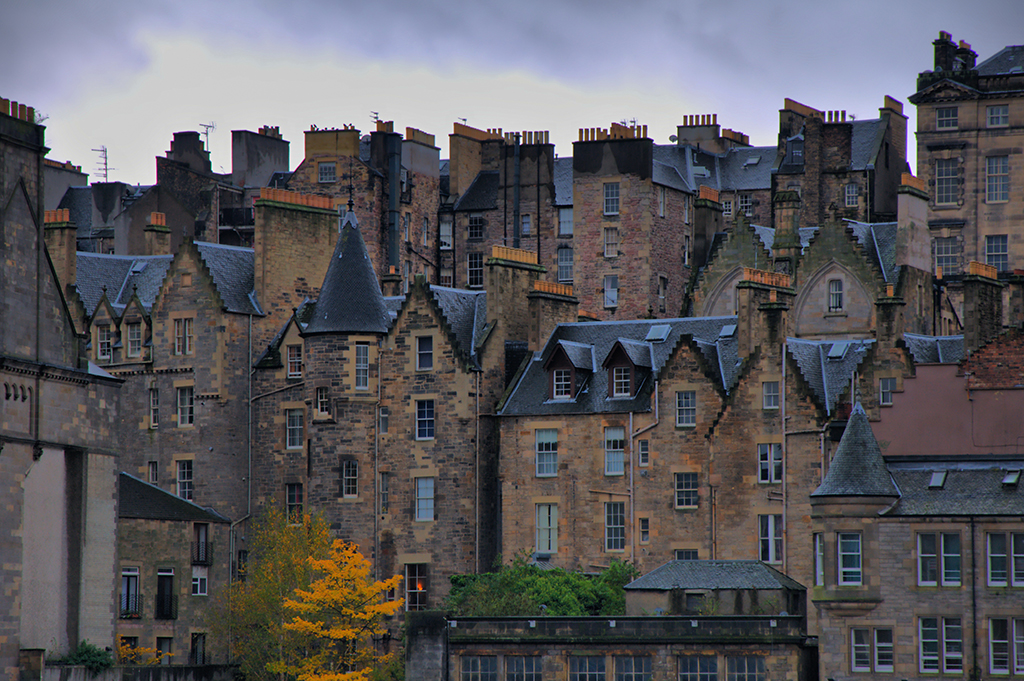Scotland’s history is peppered with tales of uprising and unrest, many of which have ended in bloodshed.
These are Scottish Field’s top ten riots.
1. Battle of George Square, 1919
‘Bloody Friday’ was the culmination of a week-long strike at the end of January opposing the new 47-hour week. Over 70,000 Glasgow workers came out on strike, which was peaceful until 31 January when the police led a baton charge. The strikers fought back with iron palings and bottles and took control of George Square. The following day thousands of fully-equipped, young English troops and heavy munitions trucks poured into George Square; howitzers were positioned in the city chambers and the cattle market became a tank depot. Fortunately there was no further fi ghting and the leaders of the riot were arrested.
2. King’s Birthday Riots, 1792
The birthday of George III on 4 June was usually a time of celebration, but in 1792 it was the spark for mass protests in Edinburgh. The mob rampaged for three days, burning effigies of the Home Secretary, Henry Dundas, nicknamed King Harry the Ninth because of his domination of Scottish politics. The crowd also tried to burn down the house of the Lord Advocate. The riots were partly political – they were organised by radicals – and partly a protest about high food prices.
3. Tron Riot. 1811/12

Edinburgh’s Old Town
On Hogmanay 1811 a gang of youths – led by the notorious Keellie Gang – began attacking and robbing the wealthy New Town residents who had gathered at the Tron, in Edinburgh’s Old Town, to celebrate New Year. One member of the Watch was singled out and so brutally beaten with sticks that he later died. Sixty-eight youths, all less than twenty years old, were arrested; five of them were hanged.
4. Royal High School Riot, 1595
Angry at being refused a week’s holiday, on 15 September 1595 pupils at the Royal High School in Edinburgh occupied the school. After failing to negotiate a peaceful reconciliation the headmaster, Hercules Rollock, called the authorities. One of the pupils, William Sinclair, threatened to shoot anyone who attempted to enter the school, and as the magistrate, John Macmorran, and his men were attempting to batter down the the door Sinclair
shot him through the head, killing him instantly.
5. Galloway Levellers’ Uprising, 1724
In 1723 a large number of tenants were evicted in Kirkcudbright to make way for large cattle parks. In March 1724 the evicted cottars responded with violence: they ‘rose in a mob and with pitchforks, gavelocks and spades levelled the park-dykes’. Between March and October thousands of miles of dykes were destroyed. At the end of October troops confronted the Levellers at Duchrae in Balmaghie parish, capturing around 200. This pretty much signalled the end of the troubles.
6. Siege of St Andrews Castle, 1546

St Andrews Castle
In 1546 Cardinal David Beaton imprisoned the protestant preacher George Wishart and had him burnt at the stake in front of the castle walls. Wishart had a number of powerful friends, including a group of Fife lairds, who plotted to murder the Cardinal. On 29 May the lairds formed into four teams and, disguised as masons, got into the castle, overpowered the guards, stabbed Beaton and hung his body over the parapet. The lairds occupied the castle until July 1547 when they were removed after a brutal assault by French troops.
7. The Massacre of the Rosses
When Alexander Munro, the landlord of the Greenyards in Strathcarron, attempted to evict his twenty-four tenants during the Clearances, two writs of eviction were met with a force of women and children who refused to budge. On 31 March a group of constables set off to clear the Greenyards and were again met by the women. The procurator fiscal read the Riot Act and the police set about the women with truncheons and hobnailed boots. A woman of 47 was clubbed to death, whilst others later died of their injuries. Before arresting the women the police burned down their houses.
8. Porteous Riots

The Porteous Riots
Captain of the City Guard of Edinburgh, John Porteous (1695-1736), was notorious amongst Edinburgh’s underclasses for his merciless brutality. On 14 April 1736 a riot broke out at the public execution of a smuggler in the Grassmarket. As the situation became increasingly violent and chaotic Porteous ordered the Guard to fire into the crowd, killing six. He was arrested and sentenced to hang for murder. However, worried that Porteous would be reprieved, on 7 September – the day before the hanging – a mob of 4,000 surrounded the Tolbooth. Porteous was dragged from his cell and lynched from a dyer’s pole.
9. Battle of Monnymuir, 1820
The Radical War was a week of strikes and unrest across much of central Scotland. On Monday 3 April over 60,000 workers downed tools to demand reform. Across Scotland Radicals assembled for the purposes of establishing a provisional government. A group of 30 men marched from Glasgow to the Carron Company ironworks near Falkirk to seize weapons. However, they were met by a force of Hussars near Bonnybridge and forced to fl ee after a short gun battle. In all, 88 men were charged with treason; three men were publicly hanged then beheaded and a further 19 were transported for life.
10. Handloom Weavers’ Riot, 1787
Scotland’s earliest recorded industrial dispute took place on 3 September 1787 and involved the journeymen weavers from Calton, just outside Glasgow. In the summer of that year the weavers began agitating for a wage increase. As the dispute became more bitter looms were destroyed and warehouses were burned down. On 3 September troops entered the Calton area and fought with rioters – three weavers were killed and several others were injured.
TAGS

